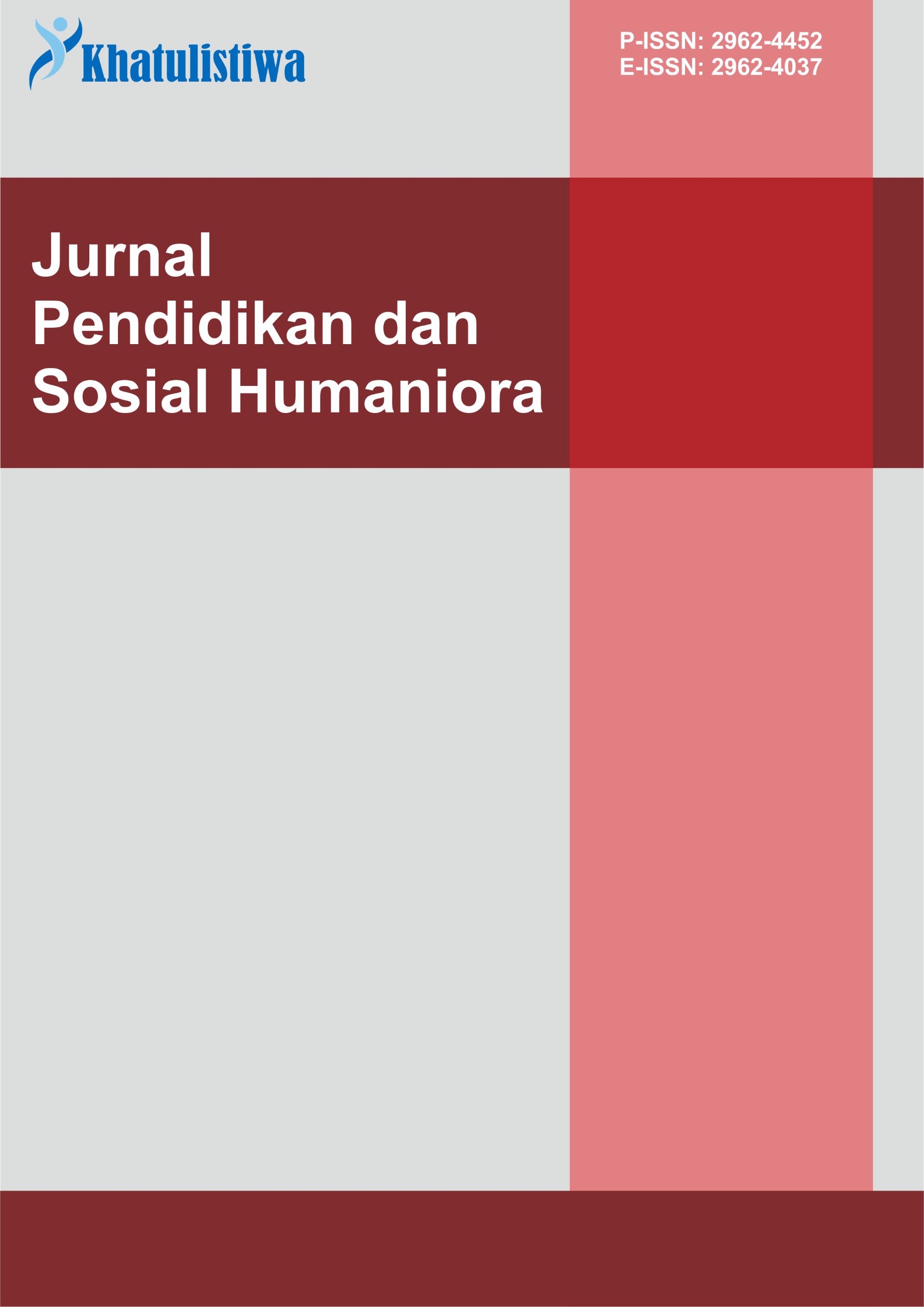From Isolation to Collapse: Environmental Contributions to Complex Trauma in Thirteen Reasons Why
DOI:
https://doi.org/10.55606/khatulistiwa.v5i3.7145Keywords:
Adolescent trauma, Bronfenbrenner, complex trauma, literary analysis, psychological systemsAbstract
This study explores the representation of adolescent trauma through the character of Hannah Baker in Thirteen Reasons Why by Jay Asher. Using a qualitative descriptive method with a psychological literary analysis approach, the research applies Bronfenbrenner’s Ecological Systems Theory and the concept of complex trauma to investigate how environmental systems contribute to psychological deterioration. The analysis identifies five levels microsystem, mesosystem, exosystem, macrosystem, and chronosystem that each fail to provide the support Hannah needs, ultimately leading to her emotional collapse. Key findings reveal that direct peer betrayal, institutional neglect, weak family-school communication, cultural normalization of victim-blaming, and cumulative unresolved trauma collectively influence the protagonist's declining mental health. The study demonstrates that trauma in adolescence is rarely the result of a single incident but rather the accumulation of systemic failures over time. The findings imply that educational institutions and communities must adopt trauma-informed frameworks and foster empathetic, interconnected support systems to protect vulnerable youth.
References
Ahmed, S. K. (2024). The pillars of trustworthiness in qualitative research. Journal of Medicine, Surgery, and Public Health, 2(January), 0–3. https://doi.org/10.1016/j.glmedi.2024.100051
Amari, N., & Mahoney, A. (2021). Working relationally with adolescents who have experienced complex interpersonal trauma: An interpretative phenomenological analysis. Journal of Child & Adolescent Trauma, 3(24), 1–13.
Charles, A. (2023). Working-through traumatic memory in young adult fiction. BYU ScholarsArchive, 1–28.
Cruz, D., Lichten, M., Berg, K., & George, P. (2022). Developmental trauma: Conceptual framework, associated risks and comorbidities, and evaluation and treatment. Frontiers, 6(22), 1–14.
Downey, C., & Crummy, A. (2022). The impact of childhood trauma on children’s wellbeing and adult behavior. European Journal of Trauma & Dissociation, 6(1), 1–8. https://doi.org/10.1016/j.ejtd.2021.100237
Enworo, O. C. (2023). Application of Guba and Lincoln’s parallel criteria to assess trustworthiness of qualitative research on indigenous social protection systems. Qualitative Research Journal, 23(4), 372–384. https://doi.org/10.1108/QRJ-08-2022-0116
Kazlauskas, E., Kairyte, A., & Zelviene, P. (2024). Complex posttraumatic stress disorder in adolescence: A two-year follow-up study. Clinical Child Psychology and Psychiatry, 29(2), 466–478. https://doi.org/10.1177/13591045231187975
Maynard, B. R., Dell, N. A., & Kelly, M. S. (2019). Effects of trauma‐informed approaches in schools: A systematic review. Campbell Systematic Reviews, 15(1018), 1–18. https://doi.org/10.1002/cl2.1018
McGill, A., McCloskey, R., Smith, D., & Veitch, B. (2023). Establishing trustworthiness in health care process modelling: A practical guide to quality enhancement in studies using the Functional Resonance Analysis Method. International Journal of Qualitative Methods, 22, 1–13. https://doi.org/10.1177/16094069231183616
McKim, C. (2023). Meaningful member-checking: A structured approach to member-checking. American Journal of Qualitative Research, 7(2), 41–52.
Naslund, J. A., Bondre, A., Torous, J., & Aschbrenner, K. A. (2020). Social media and mental health: Benefits, risks, and opportunities for research and practice. Journal of Technology in Behavioral Science, 5, 245–257.
Olff, M., Hein, I., Amstadter, A. B., Armour, C., Birkeland, S., Bui, E., Cloitre, M., Ehlers, A., Ford, J. D., Greene, T., Hansen, M., Harnett, N. G., Kaminer, D., Minelli, A., Niles, B., Nugent, N. R., Roberts, N., Price, M., Reffi, A. N., … To, M. (2025). The impact of trauma and how to intervene: A narrative review of psychotraumatology over the past 15 years. European Journal of Psychotraumatology, 16(1), 1–37. https://doi.org/10.1080/20008066.2025.2458406
Pfluger, V., Rohner, S. L., Eising, C. M., Maercker, A., & Thoma, M. V. (2022). Associations between complex trauma exposure in childhood/adolescence and psychopathology in older age: The role of stress coping and coping self-perception. Journal of Child & Adolescent Trauma, 15, 539–551. https://doi.org/10.1007/s40653-021-00419-0
Rosell-Bellot, G., Izquierdo-Sotorrío, E., Arco, A. H., Rueda-Extremera, M., & Brenlla, M. E. (2025). Treating complex trauma in adolescence: A case study of brief focal psychotherapy after vicarious gender violence and child abuse. Behavioral Sciences, 15(784), 1–19.
Sanders, J., Joseph-McCatty, A., Massey, M., Swiatek, E., Csiernik, B., & Igor, E. (2024). Exposure to adversity and trauma among students who experience school discipline: A scoping review. Review of Educational Research, 94(5), 699–742. https://doi.org/10.3102/00346543231203674
World Health Organization. (2023). Mental health of children and young people. WHO.
Zhong, Y., Hu, Q., Chen, J., Li, Y., Chen, R., Li, Y., Cong, E., & Xu, Y. (2024). The impact of childhood trauma on adolescent depressive symptoms: The chain mediating role of borderline personality traits and self-control. BMC Psychiatry, 24(377), 1–8.
Downloads
Published
How to Cite
Issue
Section
License
Copyright (c) 2025 Khatulistiwa: Jurnal Pendidikan dan Sosial Humaniora

This work is licensed under a Creative Commons Attribution-ShareAlike 4.0 International License.








